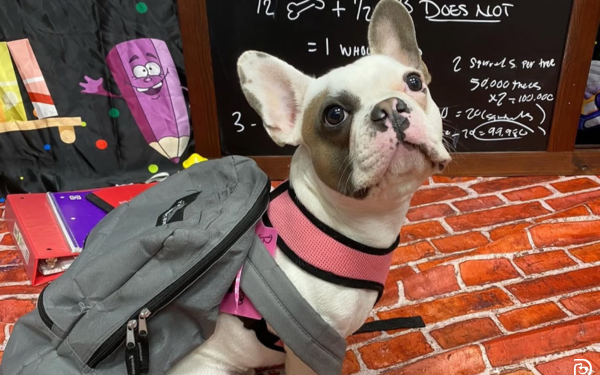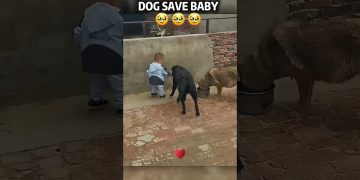As back-to-school season approaches, many family routines shift, including ones that are set for your dog. Since pups thrive on structure and predictability, it’s not uncommon for changes to cause feelings of separation anxiety, particularly if you are out of the house more and not providing as much attention to them throughout the day.
In this post, we’ll help you navigate potential behavioral and emotional changes in your dog by answering:
WHY CAN SEPARATION ANXIETY SPIKE IN DOGS DURING THE SCHOOL YEAR?
There are several reasons why your dog’s separation anxiety may happen, and changes in their environment and daily routine can contribute to this. During the summer, your pup likely spent more time outdoors and received extra attention from family members who were at home more during the day. However, as the school year begins, wake-up and wind-down times can change, and you and your family may not be home as much. This abrupt change in the day-to-day can be challenging for some dogs, and it may take them some time to adjust.
As your family adjusts to busier schedules, your dog may receive less exercise and mental stimulation, especially if they were used to more walks and playtime in the summer. Additionally, pups might experience emotional withdrawal since they are not around people as often, leading to increased stress or anxiety when left alone.
WHAT ARE SIGNS OF SEPARATION ANXIETY IN DOGS?
Separation anxiety is a condition where a dog experiences signs of distress and anxiety when separated from their owner/family. Signs and symptoms can include:
- Reactional behaviors that are not typical for them (e.g., chewing, destroying items around the home, urinating or defecating indoors, etc.)
- Excessive barking, howling, or whining
- Pacing
- Trembling
- Drooling or excessive panting
- Changes in behavior when you’re around them (e.g., following you around your home, decreased appetite, etc.)
HOW CAN I HELP MY DOG’S SEPARATION ANXIETY?
Once you’ve discovered that your pup has separation anxiety, which you can often determine by observing changes in their behavior or by setting up an in-home camera to watch their reaction when you leave your home, it is important to establish a treatment plan. Consult with your veterinarian first to confirm that this is what your dog is experiencing and to determine next steps.
GRADUALLY INTRODUCE THE NEW ROUTINE
During significant lifestyle changes, like back-to-school season, it can be helpful to ease your dog into a new routine. Try implementing the new school-year routine gradually, if possible, so it’s not too much of a shock for your pup. This can include changing walk times and feeding to match what they can expect during the school year.
CREATE A COMFORTABLE ENVIRONMENT
Whether it’s their familiar crate with comfortable bedding or a gated-off area of your home, creating a safe and comfortable space can help ease their anxiety. Playing music around your home has also been shown to have a calming effect on some dogs. However, it is important to incorporate music while you’re home, so they don’t associate playing music with you leaving.
INCORPORATE EXERCISE AND MENTAL STIMULATION
Keeping your dog active is essential for their overall health. However, if you or your family members are often away from home, you may need to plan how to incorporate exercise into their routine. If possible, take your pup for a walk or let them play outside before you leave. This can help them burn off excess energy, making it easier for them to relax when they are indoors by themselves.
Mental stimulation is also important for dogs, as it can help keep their minds sharp and reduce feelings of boredom. Introducing treat toys, such as puzzle feeders, snuffle mats, or KONGs, into your dog’s environment can keep them entertained while you’re away. However, be mindful not to overfill these toys with food or treats, as you won’t be there to monitor how much they consume.
BRING YOUR DOG TO DAYCARE
Dog daycare can be a game-changer during the school year. Rather than your pup spending long hours alone at home, they can socialize with like-minded dogs, engage in supervised play, and burn off energy in a safe and structured environment.
At Dogtopia, our team recognizes the challenges of separation anxiety in dogs. During daycare, we incorporate exercises and activities to keep your pup active and mentally engaged, helping to reduce boredom and loneliness. You can have peace of mind knowing that your dog is well cared for while you’re away. Plus, you can check in on them through our playroom webcams to see all the fun they’re having throughout the day.
Contact your nearest Dogtopia daycare to get started!
(Photo courtesy of instagram.com/ dogtopia_chesterfield/)









Discussion about this post